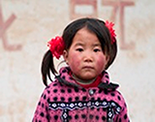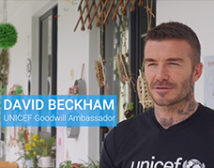The first look at the destruction left by Typhoon Haiyan is a shock – even for those used to working in disasters.

©UNICEF/2013/Jeoffrey Maitem
On 10 November, a woman and her children, who have been displaced by Super Typhoon Haiyan, rest on the side of a partially flooded street in Tacloban City – one of the areas worst affected by the disaster. |
TACLOBAN, Philippines, 13 November 2013 – I have been working on emergencies for more than 15 years now, and I seriously thought I had seen it all.
But flying into Tacloban on Monday as part of a United Nations assessment team, I was in for a shock.
As the plane taxied along the bare runway, I could see mud and ruin – only mud and ruin – where once there had been trees and buildings and all the normal signs of life.
Yes, there was still a tarmac runway, but that was all that was there – a runway. Everything that had once been inside the terminal buildings was now outside, and what had been outside was inside, including a flight of boarding stairs.
We were told to avoid parts of the ruined buildings because there were still bodies in the rubble where airport employees had sought refuge from the storm.
The road from the airport once ran through small fishing villages that lined the coast. They are now completely gone.

©UNICEF/2013/Jeoffrey Maitem
A woman carrying her daughter under an umbrella walks past some of the damage and destruction caused by Super Typhoon Haiyan, in Tacloban City. |
Eerie quiet
It was probably a mistake, but as we drove to the city hall, I counted the bodies we passed. I stopped at 100.
The dead were just lying there, among the dazed groups of survivors who were milling about. No structure was left untouched. Even the biggest and strongest concrete buildings were damaged.
There was an eerie quiet as I walked around the city hall. After the other emergencies I've worked on, I expected activity, convoys of trucks passing through.
But here there was nothing – no phones ringing, no bustle or movement – just dazed people shuffling about trying to find help and provisions.
I went to the city coliseum to talk to survivors. Even before they opened their mouths, I could see in their eyes the shock, fear and frustration at what they had just been through.

©UNICEF/2013/Jeoffrey Maitem
Residents walk past downed trees and destroyed homes and cars, on a road in Tacloban City. |
One man saw me with my satellite phone and told me, “Use that to call help and get food for us.”
Everything lost
I can only imagine the hunger and desperation a father must feel when he can't feed his children. And what about the children who have lost their loved ones and don't have anyone to care for them? I worry for the many children who for days now have had very little.
UNICEF trucks are arriving in the next days with essential supplies for children and their families. I've been told to stay and work with local and national authorities to get them distributed right away. I am hoping this can help.
After traveling through the city, I reported back to colleagues in Manila with a few bars of phone signal I could get in this one spot I found.
There's no need to assess anymore, I told them.
These people here have lost everything. They need everything.
By Nonoy Fajardo, UNICEF Disaster Risk Reduction and Emergency Specialist
































